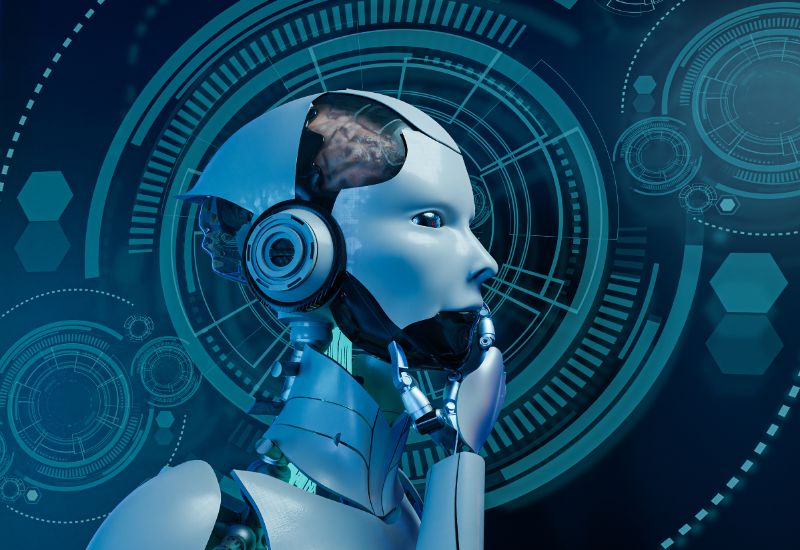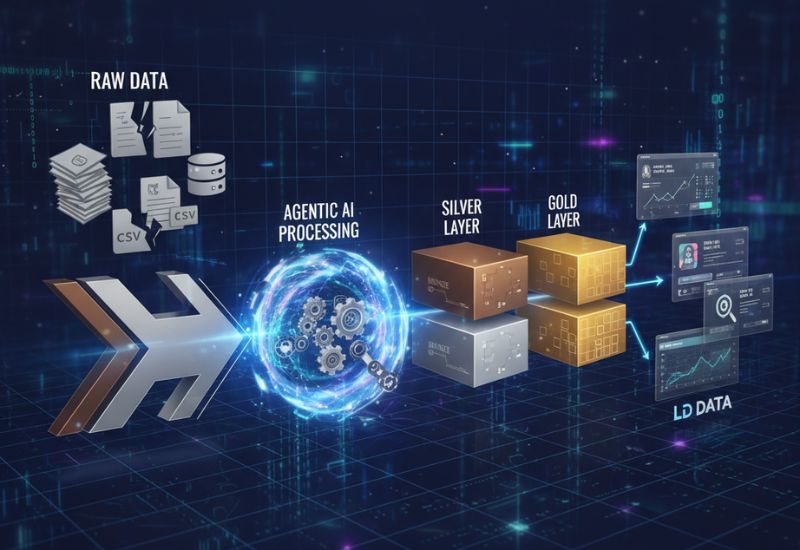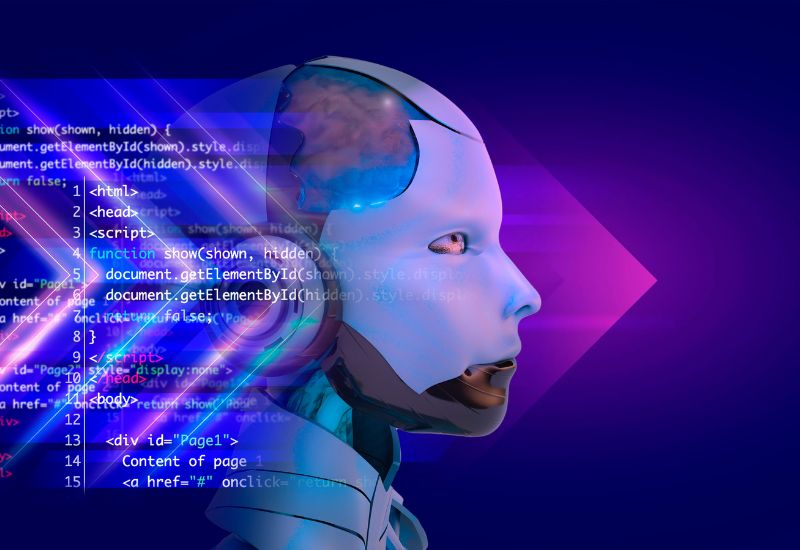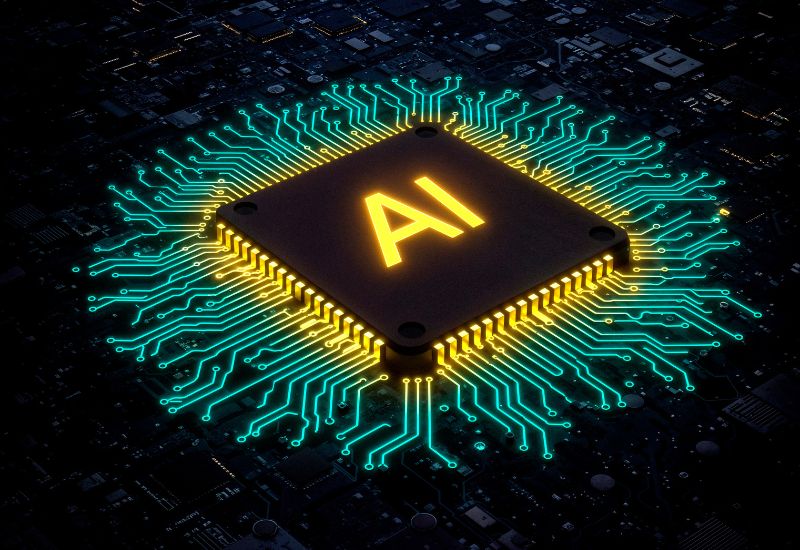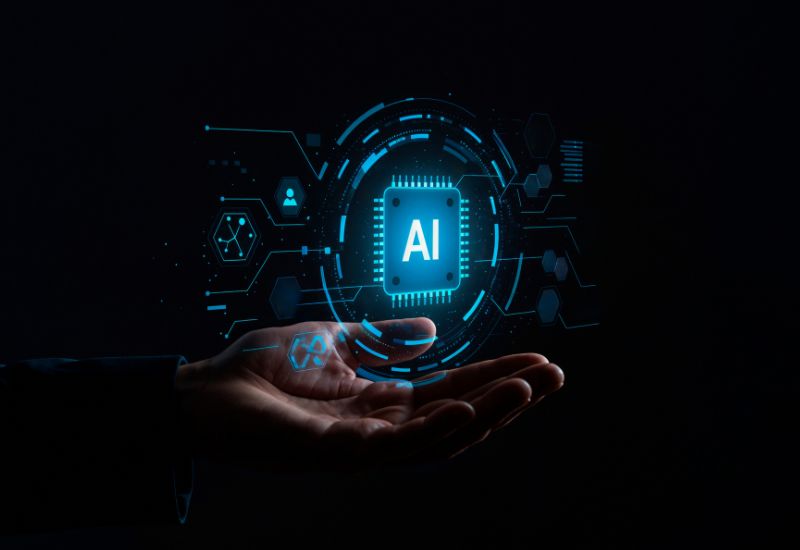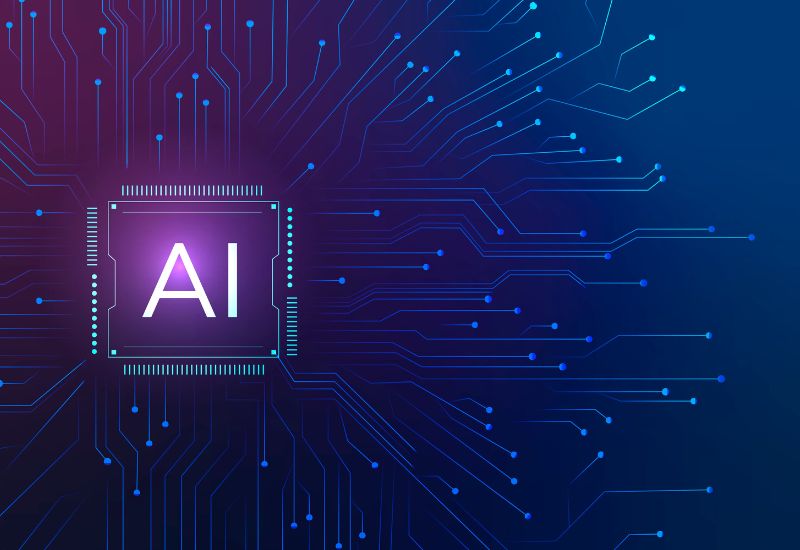In a world where technology evolves rapidly, Agentic AI stands at the forefront of innovation, reshaping how we interact with machines. Imagine AI that not only processes data but understands context, makes autonomous decisions, and adapts in real-time. Sounds like science fiction? This is the reality of Agentic AI frameworks. In this blog post, we explore what they are, how they work, and their impact on industries and society. Whether you’re a tech enthusiast or curious about AI’s future, join us for an exciting and informative journey!
What Does Agentic Mean in AI?
Agentic AI, or agent-based artificial intelligence, creates intelligent agents capable of making independent decisions and taking purposeful actions toward specific goals. Unlike traditional AI that follows fixed rules or solves isolated tasks, agentic AI enables machines to learn, adapt, and respond based on their environment and objectives. Using techniques like reinforcement learning and deep learning, these agents gather and analyze data to make informed choices. For example, self-driving cars use sensor data to navigate safely through traffic without explicit programming for every scenario.
This agentic approach offers key advantages such as adaptability and scalability. Agents improve their performance by learning from experience and adjusting behavior to changing conditions. Because they operate autonomously, they can be deployed widely across industries like healthcare, finance, and transportation. In healthcare, agentic AI can analyze patient data for diagnosis and personalized treatment, while in finance it helps with market analysis and investment decisions. Overall, agentic AI frameworks are transforming how we build intelligent systems, opening new possibilities for real-world applications.
What is agentic framework?
An agentic framework is a model used to design AI systems that act autonomously, making decisions and taking actions without human intervention. These intelligent machines learn from experience, adapt to new situations, and perform tasks with minimal supervision. They perceive their environment through sensory inputs like cameras or microphones, process this data using machine learning and natural language processing, and then decide how to act based on what they have learned.
A key feature of an agentic framework is adaptability. Similar to humans, these AI systems continuously improve by learning from feedback, often through reinforcement learning, which adjusts their decision-making over time. Practical applications include autonomous vehicles powered by agentic AI workflows that use real-time sensor data to navigate safely without human help. As agentic AI frameworks evolve, they are expected to transform many industries by enabling smarter, more independent machines.
AI Agent VS Agentic AI
There is often confusion between "AI agents" and "agentic AI," but they differ in key ways. An AI agent is a software entity that acts autonomously within defined rules to perform specific tasks, using algorithms and machine learning to analyze data and make decisions. In contrast, agentic AI refers to a more advanced framework where agents not only follow instructions but also exhibit autonomy, creativity, and adaptability. Unlike traditional AI agents that rely on preset rules, agentic AI systems dynamically respond to new situations with flexible decision-making.
A good example is comparing an autonomous vehicle (AI agent) to a self-driving car (agentic AI). Both use sensors and algorithms to navigate, but agentic AI can make real-time decisions like changing lanes or rerouting based on traffic. Traditional AI agents are often designed for narrow tasks, such as virtual assistants, while agentic AI frameworks aim for broader autonomy through adaptive learning. This makes agentic AI a step beyond simple task completion, creating intelligent machines capable of independent learning and action.
Difference Between AI Agent Builders and Agentic AI Frameworks
When talking about building intelligent systems, people often confuse AI agent builders with agentic AI frameworks. While both are tools to develop AI agents, they serve different purposes and offer unique advantages.
AI agent builders are platforms or tools that allow developers to create, configure, and launch AI agents without building everything from scratch. These builders focus more on usability and speed. They often come with user interfaces, pre-built templates, drag-and-drop components, and APIs that help teams deploy agents quickly. Tools like LangChain or AutoGPT can be seen as examples of agent builders, where much of the heavy lifting is handled for you.
On the other hand, an agentic AI framework is the underlying structure or architecture that defines how an agent operates, makes decisions, and manages tasks. Instead of just building agents, agentic AI frameworks focus on how agents behave. This includes things like memory management, long-term reasoning, planning, and the ability to break complex problems into smaller steps. An agentic framework gives developers more control over the logic, autonomy, and adaptability of the agent.
Think of it like this: if you were building a robot, an AI agent builder would give you all the parts and instructions to assemble it. An agentic framework, however, would be the brain and nervous system, defining how that robot thinks, learns, and reacts to the world.
In summary, AI agent builders are tools for creating agents faster, while agentic frameworks are the technical backbones that guide how those agents function intelligently and independently.
If you want to build AI agents that can reason, adapt, and perform complex tasks with more autonomy, using a robust agentic framework is key.
How Do Agentic AI Frameworks Work?
An agentic framework is built to help AI systems think and act more like humans by following a structured process. Instead of simply answering a question or generating a single response, agents created using an agentic AI framework can plan ahead, make decisions, use tools, and improve through feedback.
Let’s break down how this process works:
1. Receiving the Task or Goal
Everything starts when the AI agent receives a clear task. This could be as simple as writing a summary of an article or as complex as researching a business topic and creating a presentation. Unlike a traditional AI model that just gives one answer, an agent in an agentic AI framework understands that it may need to take several steps to complete the task.
2. Planning the Steps
Once the task is understood, the agent creates a step-by-step plan. This plan is not just hardcoded, the agent builds it dynamically, based on the task’s complexity. It decides what actions to take first, what tools it might need, and in what order it should work.
3. Using Tools and External Systems
An important part of an agentic AI framework is the ability to connect with tools like search engines, databases, calculators, or APIs. This gives the agent more power to act in the real world instead of just generating text. For example, it can look up the latest data, send emails, or pull reports from a CRM system.
4. Memory and Context Handling
One major benefit of an agentic AI framework is memory. The agent can remember what it has already done, what information it has gathered, and what decisions it has made so far. This helps it stay consistent across long tasks or when dealing with changing information.
5. Decision Making and Adjustments
As the agent works through the task, it continuously evaluates what it has done and what needs to be done next. If something changes or new data is found, the agent can adjust its plan and move in a new direction without starting over.
6. Final Output and Learning
After completing the task, the agent provides the final output. In some cases, the agent also learns from the results, storing useful patterns or outcomes to improve future performance. This ongoing improvement is a key part of what makes an agentic AI framework different from a basic automation tool.
In simple terms, an agentic AI framework gives structure to how AI agents operate. It guides them to think ahead, make smart choices, use external resources, and learn from experience. This is what enables AI to move beyond simple interactions and take on more meaningful, real-world challenges.
Why Use Agentic AI Frameworks?
As artificial intelligence becomes more advanced, the need for systems that can think, plan, and adapt is growing fast. This is where an agentic AI framework comes into play. It helps build AI agents that are not only smart but also capable of working through multi-step problems on their own.
Agentic AI workflows allow agents to handle tasks in a stepwise, goal-oriented manner by breaking down complex problems and adapting along the way. Let’s look at the reasons why using an agentic AI framework makes sense for developers, researchers, and businesses.
1. Solves Complex Tasks More Efficiently
Unlike basic AI models that respond to one prompt at a time, agents built with an agentic AI framework can manage entire workflows. They break big problems into smaller steps, track progress, and adjust their actions along the way. This makes them ideal for research, automation, and decision-making tasks that require more than just a quick answer.
Example: An agent can fetch data from multiple sources, clean and normalize it, then generate a dashboard comparing monthly trends.
2. Enables Goal-Oriented Thinking
One of the biggest advantages of an agentic AI framework is that it supports goal-based reasoning. The agent doesn’t just react. It works toward a goal, considers what tools it needs, chooses the best path, and takes action step by step. This approach is more aligned with how people solve problems in the real world.
Example: Given a goal to identify customer churn patterns, the agent pulls historical data, runs correlation checks, and visualizes risk factors.
3. Offers Greater Control and Flexibility
Agentic AI frameworks allow developers to design agents with specific behavior, logic, and memory. This means you can fine-tune how your agent performs, what it remembers, and how it handles different scenarios. It also allows the agent to work across different environments, from web research to business process automation.
Example: An agent can be configured to exclude weekends from time-series sales analysis or remember last week's dataset to compare performance.
4. Improves Adaptability and Learning
Agents using an agentic AI framework are more adaptable because they evaluate their actions as they go. They can recognize when something is not working and try a new method. Some frameworks even allow for feedback and learning, helping agents perform better over time without needing to be retrained from scratch.
Example: If the data format changes or a column is missing, the agent can automatically adjust the script or ask for updated input.
5. Supports Tool Use and Real-World Interaction
A major reason to use an agentic AI framework is tool integration. Agents can use calculators, call APIs, scrape data, and interact with external platforms. This turns them from text generators into active participants that can complete tasks, not just describe them.
Example: An agent can connect to Google Analytics, pull traffic data, and use a plotting tool to build visual insights in real time.
In short, an agentic AI framework gives AI agents the structure they need to go from passive responders to active problem solvers. If your goal is to build AI that can handle complexity, reason through steps, and work with real-world systems, then using an agentic AI framework is not just helpful, it’s essential.
11 Types of Agentic AI Frameworks
The rise of autonomous AI agents has led to the development of a wide range of tools and systems that act as the backbone for these intelligent entities. Each agentic AI framework provides its own method for handling tasks like reasoning, memory retention, goal decomposition, and tool execution. Here’s a look at the most widely used agentic AI frameworks that are shaping the future of AI development.
1. AutoGen (by Microsoft)
AutoGen is a powerful multi-agent orchestration framework. It enables the creation of agents that operate in defined roles and interact via structured conversations. It supports tool execution, persistent memory, and adaptive workflows. Developers can specify agent logic using Python, and agents can even revise each other’s outputs for collaborative refinement.
Use case: Building a multi-agent system where one agent analyzes data, another interprets it, and a third generates an executive summary automatically.
2. CrewAI
CrewAI enables developers to organize agents into structured teams with well-defined roles, tasks, and communication protocols. Agents can operate independently or in coordination, simulating human workflows. It is especially effective for multi-step pipelines where different agents specialize in different tasks.
Use case: A team of agents working together where one handles ETL, another validates the results, and a third deploys the final dataset to a dashboard.
3. LangChain
LangChain is a modular library that helps developers build agents capable of reasoning over chains of prompts, executing tools (such as code interpreters or APIs), and integrating long-term memory. It supports both reactive and planner-style agents. It’s often used for building retrieval-augmented generation (RAG) pipelines.
Use case: A LangChain agent fetches financial data, performs calculations using a tool wrapper, and dynamically determines the next step based on the results.
4. LangGraph
LangGraph builds on LangChain by introducing a directed graph-based control flow. Each node in the graph can represent a specific tool, decision point, or subtask, and edges define the logic for transitions. This allows agents to loop, branch, or revisit previous steps based on context.
Use case: An agent navigates through a decision-making process by looping back to revalidate KPIs when anomalies are detected in data.
5. LlamaIndex
LlamaIndex acts as a data middleware for agents. It structures external datasets (like PDFs, SQL, APIs) into indices optimized for semantic retrieval. When combined with a reasoning engine like LangChain, it enables agents to access relevant data on demand.
Use case: A data analytics agent queries LlamaIndex to pull up the latest customer sentiment trends from structured and unstructured feedback sources.
6. Semantic Kernel (by Microsoft)
Semantic Kernel is designed for combining large language models with symbolic reasoning, function calling, and memory. It supports asynchronous event handling and planning with plugins, making it ideal for building long-lived autonomous agents that work across different services.
Use case: An agent in Semantic Kernel monitors data streams, triggers summarization functions based on changes, and sends alerts via integrated APIs.
7. Swarm
Swarm-based agentic AI frameworks draw inspiration from swarm intelligence and collective behavior systems. These agents operate in parallel, make decentralized decisions, and adapt to one another dynamically. While still emerging, swarm-based coordination is suited for distributed, fault-tolerant systems.
Use case: Multiple agents analyze streaming data across regions, self-adjusting focus areas depending on local spikes or anomalies.
8. ARCADE (Autonomous Reasoning Chain Agents for Decision-making and Execution)
ARCADE focuses on explainable agentic behavior. It uses reasoning chains where each decision is logged and traceable, making the agent's logic interpretable and auditable. It is especially useful in enterprise and regulated environments.
Use case: A compliance-focused agent walks through data access steps, records each decision, and ensures that all activity meets audit standards.
9. FIPA (Foundation for Intelligent Physical Agents)
FIPA is not a single framework but a standards organization that defines protocols for multi-agent communication. Agentic AI frameworks that follow FIPA standards can interoperate, discover each other, and send structured messages using ACL (Agent Communication Language).
Use case: Agents from different systems collaborate on a shared task, like cross-platform data federation, using a standardized messaging protocol.
10. JADE (Java Agent Development Environment)
JADE is a mature, Java-based framework that supports the development of distributed multi-agent systems. It fully implements FIPA standards, providing message transport, agent discovery, and behavior modeling. JADE is commonly used in simulations and industrial automation.
Use case: Agents deployed across different nodes automate monitoring of multiple datasets and coordinate anomaly detection tasks using defined behaviors.
11. LLaMA (Large Language Model Meta AI)
LLaMA is a family of high-performance language models developed by Meta. While not an agentic AI framework by itself, LLaMA can act as the reasoning engine within many frameworks like LangChain or LangGraph. It supports advanced inference while being lightweight enough for local or offline deployment.
Use case: A LangGraph agent powered by LLaMA reviews user feedback, predicts sentiment, and suggests improvements in real-time.
Agentic AI Framework Comparison
Agentic AI Framework | Core Functionality | Key Features | Typical Use Cases |
| AutoGen (Microsoft) | Multi-agent orchestration with role-based interactions | Supports tool execution, persistent memory, adaptive workflows | Collaborative multi-agent systems analyzing and summarizing data |
| CrewAI | Structured teams of agents with defined roles and communication | Simulates human workflows, task specialization, team coordination | Multi-step data pipelines like ETL, validation, and deployment |
| LangChain | Modular chain-of-thought agents with memory and tool integration | Supports prompt chaining, reactive and planning agents | Retrieval-augmented generation, dynamic data processing |
| LangGraph | Graph-based flow control extending LangChain | Directed graphs enable branching, looping, and revisiting tasks | Adaptive workflows, complex decision processes |
| LlamaIndex | Data indexing middleware for semantic retrieval | Structures external data for fast querying by agents | Semantic search over mixed datasets like PDFs and APIs |
| Semantic Kernel (Microsoft) | Combines LLMs with symbolic reasoning and plugin architecture | Long-term memory, async event handling, function calling | Autonomous agents monitoring data streams, cross-service integration |
| Swarm | Decentralized multi-agent systems inspired by swarm intelligence | Parallel agents making distributed decisions, self-adjusting focus | Distributed real-time data analysis, fault-tolerant systems |
| ARCADE | Explainable agent reasoning with traceable decision chains | Auditable logs of agent decisions, transparency in workflows | Compliance-focused automation and regulated environments |
| FIPA | Communication protocol standards for multi-agent interoperability | Standard messaging (ACL), agent discovery, platform interoperability | Cross-system collaboration and multi-agent communication |
How to choose an agentic AI framework for your Business Needs
When choosing an agentic framework for your business, start by identifying the specific problems you want your AI agents to solve. Different frameworks come with different strengths, so understanding your goals will help you pick the right one. For instance, if your business needs to handle complex workflows with multiple agents collaborating and sharing memory, frameworks like AutoGen or CrewAI could be a good match.
Next, consider how well the framework integrates with your current systems and data sources. If your agents need to access databases or communicate with external APIs, the framework should support these connections smoothly. Flexibility is also important because you may want to customize how agents process information, remember past actions, and decide their next steps. Frameworks like LangGraph are useful here, as they allow you to build detailed workflows with decision branching.
Finally, think about performance and scalability based on your data volume and the number of agents needed. For businesses in regulated industries, choosing a framework like ARCADE that offers transparent and auditable decision-making can help meet compliance requirements. Also, check the level of community support and available documentation to ensure you have help during implementation and maintenance. Matching your business needs carefully with the features of an agentic AI framework will lead to more effective and flexible AI solutions.
Conclusion
An agentic AI framework is essential for creating AI agents that can think and act independently to solve complex tasks. Picking the right framework depends on your business goals and technical needs. By understanding how these frameworks work and what they offer, you can build smarter, more flexible AI solutions that grow with your business. Starting with the right agentic AI framework sets a strong foundation for future AI success.

